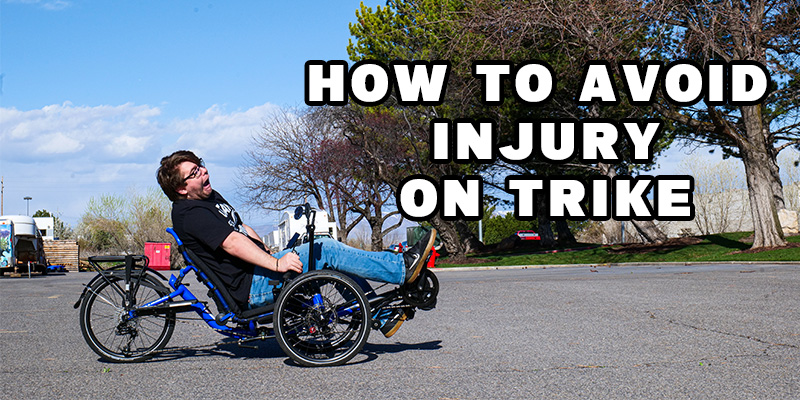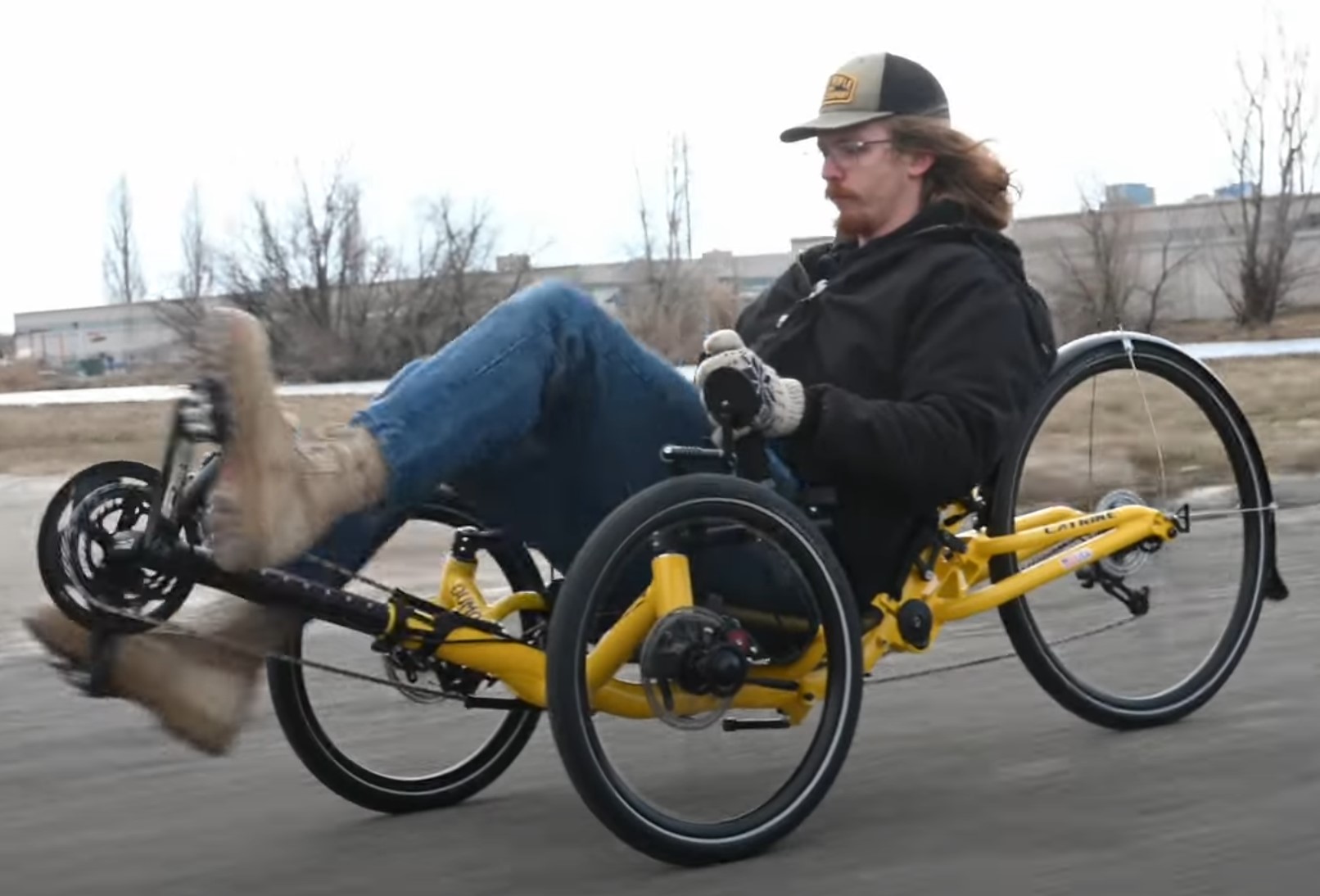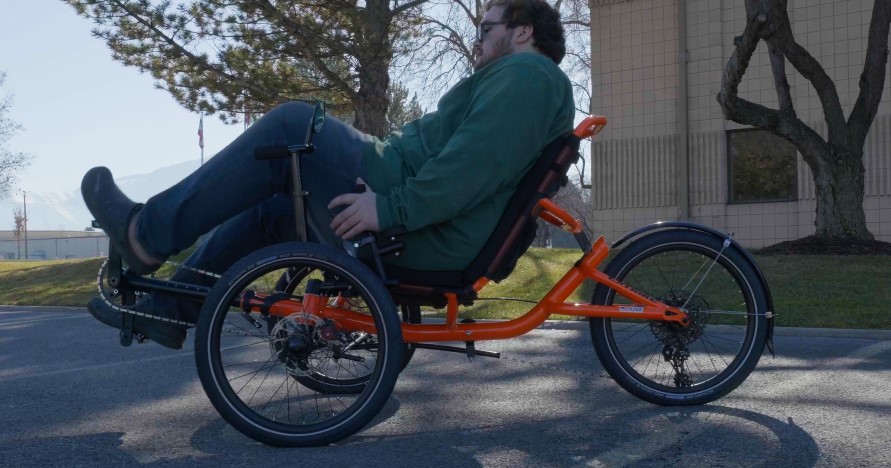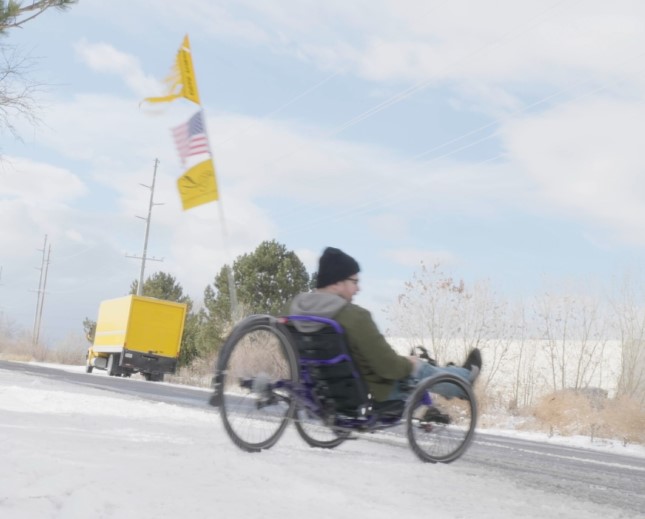

Trike Safety: How to Avoid Injury on a Trike
Published on 04/17/2024
We’ve had multiple customers reach out to us asking how they can be safe while riding their trikes. We know the ins and outs of trike riding can feel overwhelming, especially when it comes to making sure you’re safe on the road. That’s why in this article, we’re going to try to break it down in to easy-to-follow steps. Whether you're a beginner or an experienced rider, our goal is to equip you with the knowledge and tools you need to stay safe and confident while enjoying your trike rides.

Trike riding offers a unique blend of freedom and adventure. However, it's important to recognize that safety should always be a top priority. With multiple things to consider, from road conditions to traffic interactions, knowing how to navigate these challenges safely can make all the difference in your riding experience.
In this article, we'll cover everything you need to know about staying safe while riding your trike, from protective gear to practicing defensive riding techniques. By following these easy steps and prioritizing safety, you can enjoy the countless benefits of trike riding with peace of mind, knowing that you're well-prepared to handle whatever the road may bring.
So, let's dive in and explore some safety tips you should keep in mind for a safe and enjoyable trike ride.
Prepare
Preparing before you head out on a ride can make a big impact on how your ride will go. In this section we’ll go over a few tips to help you be prepared before you leave on a ride.
Be mindful of road and weather conditions:
Road conditions and weather can make a major impact on your ride. It’s a great idea to plan your ride ahead of time so that you know of any possible road work that may be happening. Looking at the weather ahead of time and planning accordingly can help to prevent possible accidents and injuries.
Proper adjustments:
Making sure that your trike is properly adjusted can help to avoid potential injuries. Before you ride make sure that your seat is adjusted to your preferred height. Making sure that your trike is properly adjusted to be comfortable for you can impact your ride. By making sure your trike is properly adjusted you'll be able to make sure you're comfortable and that everything is how it should be on your trike.
Warm up:
Warming up and stretching is a great idea before starting any trike ride. Stretching can help your muscles to warm up and can help to increase motion and flexibility. warming up allows your body to prepare before you start your ride. It helps identify any areas of tightness or discomfort that may need attention before starting your ride. By addressing these issues proactively, you can reduce the likelihood of strains, sprains, and other overuse injuries during your ride.
On the Ride
In this next section we will go over tips to help you stay safe while you on are on a ride. These tips will help you remain safe while you're on a ride by riding defensively, staying hydrated, proper pedaling, and starting slow.
Defensive riding
Practicing defensive riding is essential for staying safe on the road, especially when riding a trike. Adopting a defensive riding mindset means being proactive and vigilant, anticipating potential hazards, and being prepared to react quickly and effectively. Always assume that others on the road may not see you, and ride defensively to minimize your risk of accidents and collisions.

When riding defensively, it's crucial to maintain a heightened awareness of your surroundings at all times. Scan the road ahead for potential hazards, such as potholes, debris, or obstacles, and be prepared to adjust your course or speed accordingly. Keep an eye on the behavior of other road users, including motorists, pedestrians, and cyclists, and anticipate their movements to avoid dangerous situations.
Additionally, obeying traffic laws and signals is fundamental to defensive riding. Always ride with the flow of traffic, use designated bike lanes or paths whenever possible, and signal your intentions clearly to other road users. Avoid distractions, such as using a phone or listening to music, and stay focused on the task at hand—riding safely and attentively.
Communication is another essential aspect of defensive riding. Use hand signals to indicate your intentions, such as turning, stopping, or changing lanes, and make eye contact with drivers to ensure they see you before proceeding. Be courteous and predictable in your movements, and give yourself plenty of space from other vehicles to maneuver safely.
By practicing defensive riding techniques, you can minimize your risk of accidents and collisions on the road, allowing you to enjoy your trike rides with confidence and peace of mind. Remember that safety should always be your top priority, and never hesitate to prioritize caution and vigilance when navigating the streets.
Stay hydrated:
Hydration is a key part to any type of exercise and trike riding is no different. By staying properly hydrated you can avoid potential injuries that could come from being dehydrated. Being hydrated is a key part of recovery.
Refueling your body is also a key part of avoiding injury. Your body needs fuel to be able to work properly. By fueling your body with the proper foods you set yourself up for success.

Proper pedaling:
Proper pedaling and making sure that your feet are adequately attached to the pedals can help to prevent injuries such as leg suck. When pedaling make sure to keep your feet on the pedals. Using pedal straps can also help to make sure that your feet stay on your pedals. We offer a wide range of pedals that come with straps such as our heel support pedals or our power grip pedals.
Start Slow:
Starting slow is a good idea. Start your ride at a slow pace and gradually increase your speed. Increase your riding distance and intensity gradually over time to allow your body to adapt to the demands of trike riding. Avoid sudden spikes in mileage or intensity that can lead to overuse injuries or fatigue. Listen to your body and take rest days as needed to promote recovery and prevent burnout.
Protective gear
Wearing protective gear while riding your trike can help you stay safe while on the road. Protective gear helps to keep you safe from potential injury. By protecting yourself while riding you’ll be able to have peace of mind while on the road.
Hi vis:
Sometimes while riding it can be difficult for other people to see you. This is especially true if you’re wearing dark colors. High visibility clothing and bright colored clothing makes it so that other people on the road can see you.

Flags:
Due to trikes being low to the ground flags can make it so that motorists and other riders can see you whale riding. Having a bright colored flag above your trike allows you to be more visible in situations where you may not be seen. Flags give motorists more time to react so that they have time to stop or maneuver around the trike.
Helmet:
Helmets keep your head safe while riding. A proper fitting helmet can help keep your head safe in case of falls or accidents. Wearing a properly fitted helmet can help protect your head in the event of a fall or collision.
Helmets reduce the risk of head injuries, including concussions and traumatic brain injuries, by absorbing impact forces and distributing them over a larger area. This is especially crucial for preventing serious head injuries, which can have long-term consequences or even be life-threatening.
Lights:
Lights play a key role in being safe on a trike. Lights allow you to see in front of you in dark areas and they allow people around you to see you. Lights will allow you to increase awareness of your surroundings and the road ahead of you. Lights make nighttime riding a breeze they light up the road ahead, making it easier to see obstacles and navigate turns, curves, and intersections with confidence.

Mirrors:
Mirrors help you to see what is going on behind you. We would all love to have eyes on the backs of our heads so we could see everything, but because we don't, mirrors are the next best thing. Mirrors are a key part of safety because they let us see where we usually can't. This is especially important if you're riding a recumbent trike so that you can be aware of all of your surroundings. If you want to learn more about mirrors and how they can keep you safe you can check out our video that we did on them here
After the Ride
In this section we have a few tips on what to do after a ride to prevent injury so that you'll be in your best shape to ride another day.
Routine maintenance:
After you finish your ride be sure to do any minor maintenance that needs to be done. Inspect your trike to make sure that everything is in order. We have a video on our YouTube Channel on how to basic maintenance on your trike you can watch it here.
Rest:
After a long ride rest plays a key part in recovery. Rest helps your body to replenish your energy. It can also help you to feel mentally refreshed after the focus and concentration that comes from riding. Rest can also help you to prevent possible injury or fatigue related accidents. Rest allows you to ride smarter and enjoy cycling long term.
Allow your body time to rest and recover after your ride. Take it easy for the remainder of the day, avoiding strenuous activities or high-impact exercise. Listen to your body's signals and prioritize restorative activities such as gentle stretching, foam rolling, or relaxation techniques.




